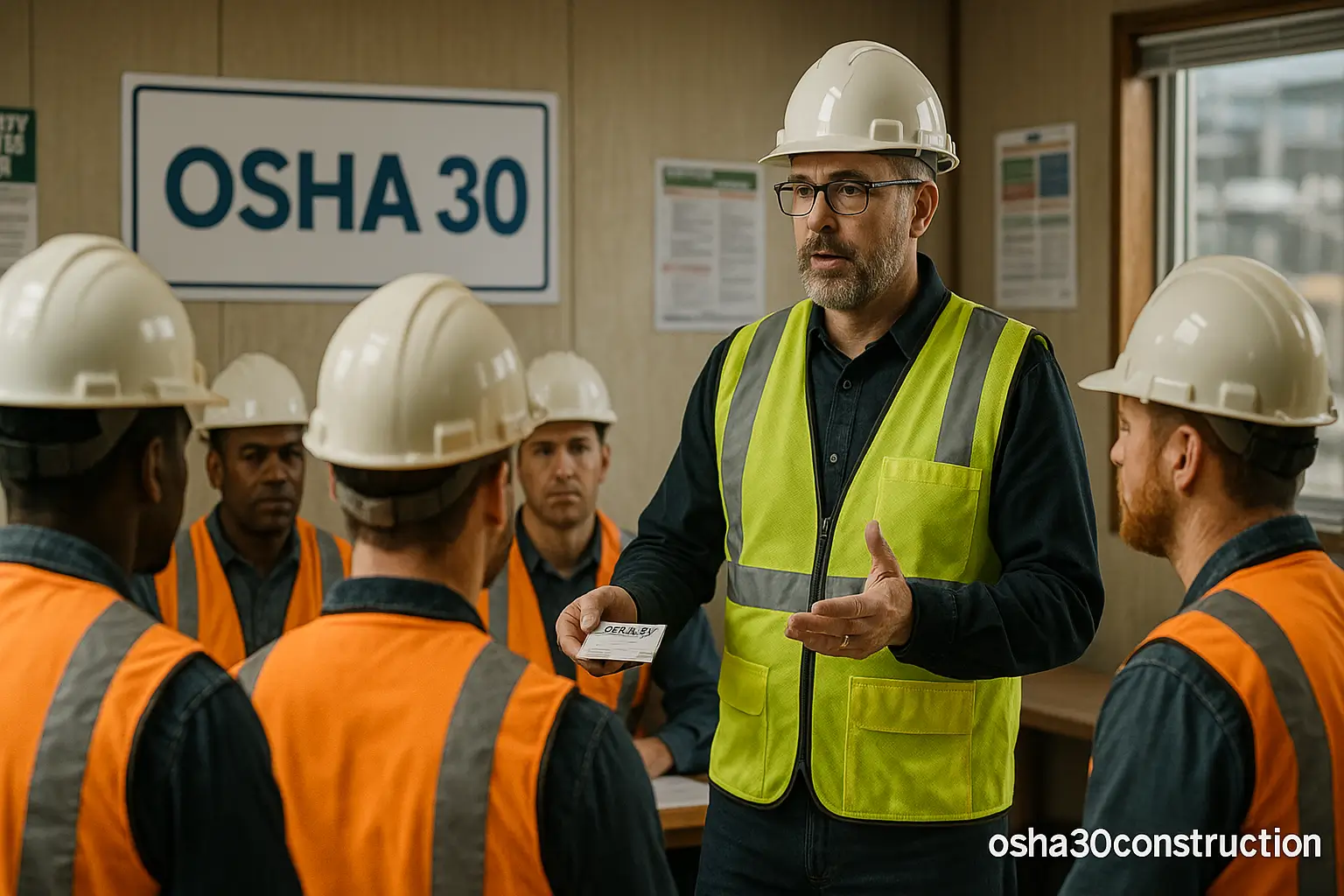Although traditionally associated with the construction sector, this OSHA-authorized 30-hour safety plays a much broader role in promoting workplace well-being across various industries. Designed to safeguard workers in potentially hazardous environments, the program helps establish a strong foundation of safety awareness.
This comprehensive training, rooted in OSHA regulations and best practices, goes beyond job sites. Industries like healthcare, manufacturing, warehousing, and logistics now adopt this extended safety program to cultivate safer workspaces, minimize severe incidents, and ensure employee protection remains a top priority.
[rcblock id=”6764″]
Understanding the Purpose Behind 30-Hour Safety Course
At its core, the OSHA-authorized 30-hour course is carefully structured to equip workers, supervisors, and site safety personnel with critical knowledge of workplace hazards, regulatory adherence, and accident prevention. From identifying potential risks to understanding Personal Protective Equipment (PPE) requirements, this training helps create safer job sites and well-informed teams.
The course spans 30 hours of detailed, self-paced learning, covering a wide array of safety topics including hazard communication, fall prevention in construction, electrical hazards, scaffold safety, emergency protocols, and more. It is especially valuable for those with responsibilities in managing or overseeing on-site operations.
While originally designed with the construction industry in mind, the core principles of this in-depth safety program apply broadly to any field where physical risk is a factor. It serves not only to fulfill OSHA adherence requirements but also to build a culture of safety across multiple work environments.
Expanding OSHA Safety Education Across Industries
Manufacturing Sector:
In manufacturing, employees frequently operate heavy machinery, manage hazardous substances, and face both physical and chemical risks. Enrolling in a 30-hour OSHA-approved safety course helps workers identify hazards, follow proper machinery protocols, and safely handle toxic materials. By implementing these best practices, companies can reduce accidents, lower absenteeism, and improve overall productivity.
Healthcare Industry:
Though often overlooked, the healthcare environment presents its own set of safety challenges, from infection risks to repetitive strain injuries. This comprehensive safety training equips nurses, doctors, and support staff with essential OSHA standards on infection control, PPE use, and patient-handling protocols. It not only protects workers but also supports higher-quality patient care.
Oil and Gas Sector:
Working in oil and gas means operating in high-risk environments where threats such as explosions, fire, and toxic exposure are real. Through this industry-focused OSHA training, workers gain vital knowledge on hazard communication, respiratory protection, and emergency preparedness, allowing them to handle complex tasks with greater confidence and control.
Transportation and Warehousing:
Logistics personnel often navigate hazardous tasks such as equipment handling, material transport, and long driving hours. This OSHA 30-hour course provides foundational knowledge on accident prevention, safe operation techniques, and ergonomic awareness, especially for truck drivers and warehouse teams prone to musculoskeletal issues.
Hospitality and Service Industry:
Even in service-driven sectors, workplace risks are present. Whether it’s chefs handling hot surfaces or hotel staff managing cleaning chemicals, employees must understand safe practices. This program offers actionable guidance on handling emergencies, using PPE, and preventing everyday injuries, creating safer experiences for both staff and guests.
[rcblock id=”6766″]
Key Benefits of Safety Training Across Industries
1. Fewer Workplace Incidents
Completing a 30-hour safety course helps build a workforce that’s alert, prepared, and aware of potential hazards. With proper knowledge of risk mitigation and safe work practices, employees are less likely to experience accidents, resulting in fewer injuries, illnesses, and emergencies on the job.
2. Stronger Regulatory Adherence
Meeting OSHA standards isn’t just about avoiding penalties; it’s about fulfilling a responsibility to protect your team. This OSHA-authorized training provides organizations with clear guidance on regulatory requirements, helping maintain adherence while promoting a culture of accountability and safety.
3. Increased Productivity
Safe environments lead to motivated teams. When employees feel secure in their workspaces, they’re more focused and efficient. By minimizing incidents and disruptions, this program helps reduce downtime and keeps operations running smoothly.
4. Better Brand Reputation
Investing in health and safety sends a strong message to employees, partners, and customers. Companies that prioritize workplace well-being through proper training build trust and loyalty, enhancing their image in both the industry and the community.
5. Reduced Costs
Accidents are costly, from medical expenses and legal fees to lost productivity and compensation claims. Employers who proactively educate their teams through comprehensive safety programs can significantly reduce these risks, turning prevention into long-term savings.
OSHA 30-Hour Training in Essence
Originally developed for the construction sector, this 30-hour safety course has evolved into a vital resource across a wide range of industries. Its core value lies in empowering workers with the knowledge and skills needed to identify, address, and prevent potential hazards, creating safer, more efficient workplaces.
Today, industries such as healthcare, manufacturing, oil and gas, and hospitality actively integrate this OSHA-approved program into their workforce training strategies. By doing so, they not only protect their teams but also strengthen adherence and cultivate a safety-first culture.
As modern workplaces continue to adapt with new technologies and practices, the foundational principles taught in this training remain more relevant than ever, serving as a pillar of occupational health and safety, safeguarding lives, and supporting resilient, forward-thinking organizations.
[rcblock id=”6066″]






